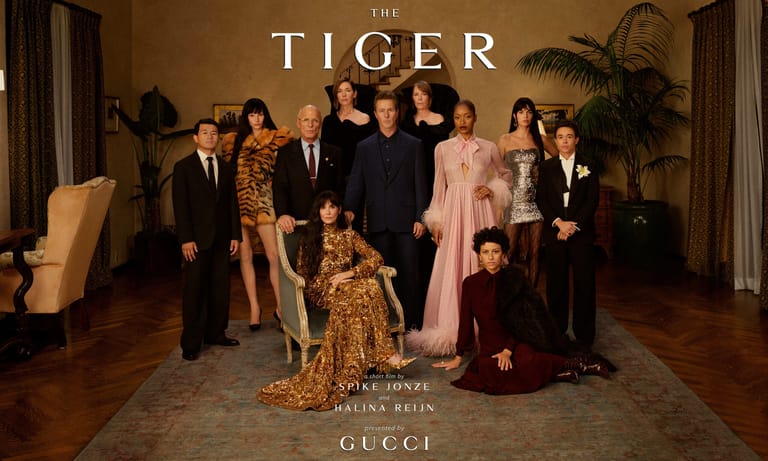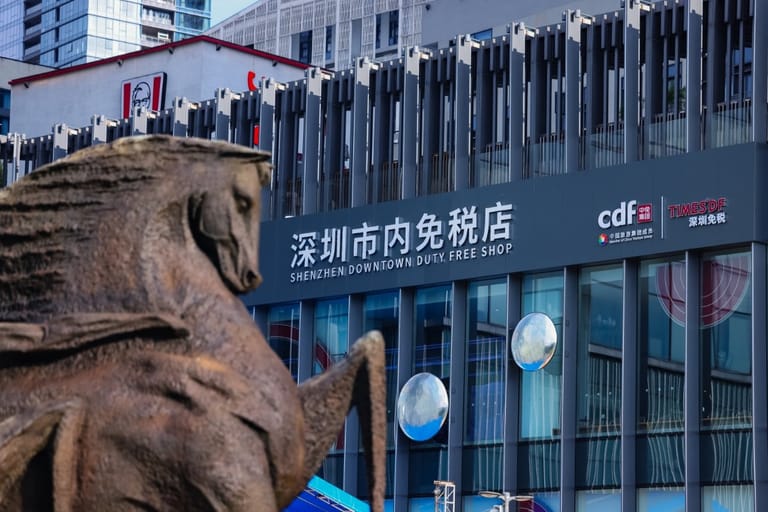Monday Briefing: Chanel Denies Layoffs, China Imposes New Tariffs, and a Blooming Spring Economy
By
Wenzhuo Wu

Published on
April 7, 2025

Start your week with sharp analysis and fresh insights into China’s latest cultural, luxury, and consumer trends. Monday Briefing connects the dots between local shifts and global repercussions, highlighting relevance to the luxury market, business strategies, and modern lifestyle trends shaping our world today.
It was a telling week for China’s consumer and luxury landscape. L’Oréal Group hosted its China strategy update, reaffirming its deep-rooted commitment to the market. Chinese gold jeweler Laopu Gold posted a striking RMB 98 billion ($13.48 billion) in 2024 revenue, reflecting the country’s continued appetite for hard luxury. Meanwhile, Dolce & Gabbana, in a show of long-term cultural investment, brought Chinese designer Susan Fang’s Fall/Winter 2025 collection to Shanghai Fashion Week following her Milan debut—further bridging the fashion world’s east-west narrative.
Amid these confident moves came a more delicate and high-stakes development: speculation about major job cuts at Chanel’s China operations—a rumor the French luxury house could ill afford to ignore. At the same time, Beijing announced sweeping 34 percent retaliatory tariffs on U.S. imports, reigniting tensions from the Trump-era trade war. Meanwhile, the Qingming Festival underscored China’s domestic consumption strength, with short-haul travel and outdoor leisure surging to new highs.
Chanel and the Optics of Denial
A leaked internal memo reported by Chinese media last week stated that Chanel intended to eliminate 89 roles from its China head office by the end of 2025, amounting to a 20 percent workforce reduction. Chanel swiftly denied the report, calling the numbers inaccurate and reaffirming its expansion plans in China, including investments in new store openings and retail network upgrades.
While the brand’s statement helped quiet public speculation, its sharp tone reflected more than corporate concern—it was an exercise in reputation control. Chanel knows that in China, perception is tightly linked to consumer trust. Any hint of retreat, particularly from a foreign luxury house, risks undermining brand equity and loyalty.
The alleged headcount reduction is especially sensitive given Chanel’s global strategy. In January, the company confirmed it had laid off around 70 employees in the U.S.—approximately 2.5 percent of its American workforce—in a move positioned as a cost-structure adjustment amid a shifting macroeconomic climate. The contrast is clear: rightsizing in the U.S. is manageable, but even whispers of a pullback in China require immediate damage control.
The stakes could not be higher. Chanel has not released its 2024 earnings, but in 2023, Asia-Pacific accounted for 52 percent of its global sales—a 21.6 percent year-on-year increase. The brand’s presence in China is not only lucrative but also vital to its success. Against this backdrop, corporate silence or miscommunication can quickly snowball into public backlash.

Tariffs, Trade and Tensions
On April 4, China’s Ministry of Finance announced a 34 percent retaliatory tariff on all U.S.-origin goods, effective April 10, 2025. The decision follows the U.S. government’s April 2 move to impose “reciprocal tariffs” on certain Chinese exports. In a detailed notice, Beijing cited both domestic legislation and international legal principles to justify the countermeasure.
Though luxury goods are rarely directly targeted in tariff disputes, the ripple effects are real. U.S.-headquartered fashion, beauty, and lifestyle brands may find themselves caught in a climate of rising scrutiny and shifting consumer sentiment. Tariffs aren’t just a matter of pricing—they carry symbolic weight in an increasingly politicized market. In this environment, brand nationality can become a liability or an asset, depending on the fluctuating winds of policy and perception.
For multinational players, this marks yet another reminder that China is no longer a pure growth story—it’s also a geopolitical chessboard. Success requires more than market entry; it demands localization, resilience, and diplomatic agility.
Spring Holidays, Local Travel, and the “Experience Economy”
Meanwhile, the Chinese consumer is in motion—literally. Over the three-day Qingming Festival holiday, which ended on Sunday, nearly 790 million cross-regional trips were recorded, up 7.1 percent from last year and setting a new record. According to China’s transport ministry, this growth underscores the continued recovery of domestic mobility.
Notable is how that movement is translating into spending. This year’s Qingming saw a surge in short-haul travel within the “2-hour high-speed rail circle”—a term that now defines much of China’s new leisure economy. “Flower-viewing tourism” was trending, with related search terms up 46 percent year-on-year on major booking platforms. Outdoor activities like hiking, camping, and cycling continue to gain traction, fuelling demand for niche experiences and wellness-centric consumption.

The pandemic-era domestic travel behavior has matured into a durable shift in consumer preference. For brands across hospitality, luxury, and lifestyle, this is a signal to invest not only in flagship cities but also in peripheral hubs and hyper-local activations. The Chinese consumer is seeking beauty, escape, and self-expression—both in product and journey.
What These Moves Signal About the Future
Taken together, last week’s developments reveal both the complexity and resilience of China’s consumer landscape.
First, Chanel’s rebuttal illustrates that China is not just a commercial battleground but a reputational one. Brands can no longer rely on passive loyalty. Cultural fluency and constant communication are now prerequisites for relevance.
Second, China’s new tariffs remind global companies that geopolitical turbulence is a baseline, not an outlier. Strategic decoupling is no longer hypothetical. For many, hedging against regulatory and diplomatic risk will become as important as demand forecasting.
Finally, the explosive growth of spring tourism points to a shift in how Chinese consumers view value. Experience has eclipsed ownership in many spending segments. The most successful brands must seamlessly integrate into this emotional and seasonal rhythm—offering meaning, not just merchandise, to stay pertinent.












